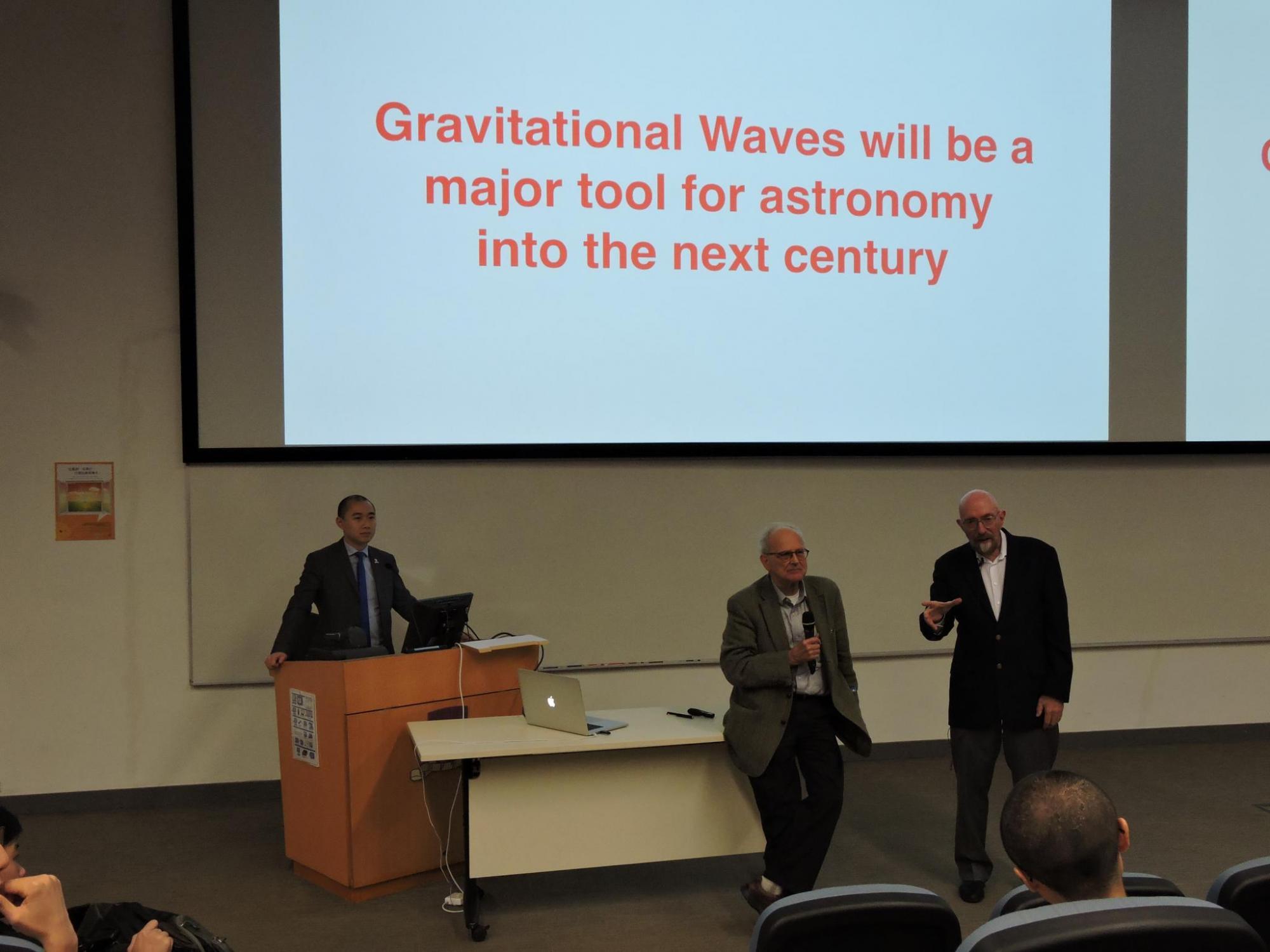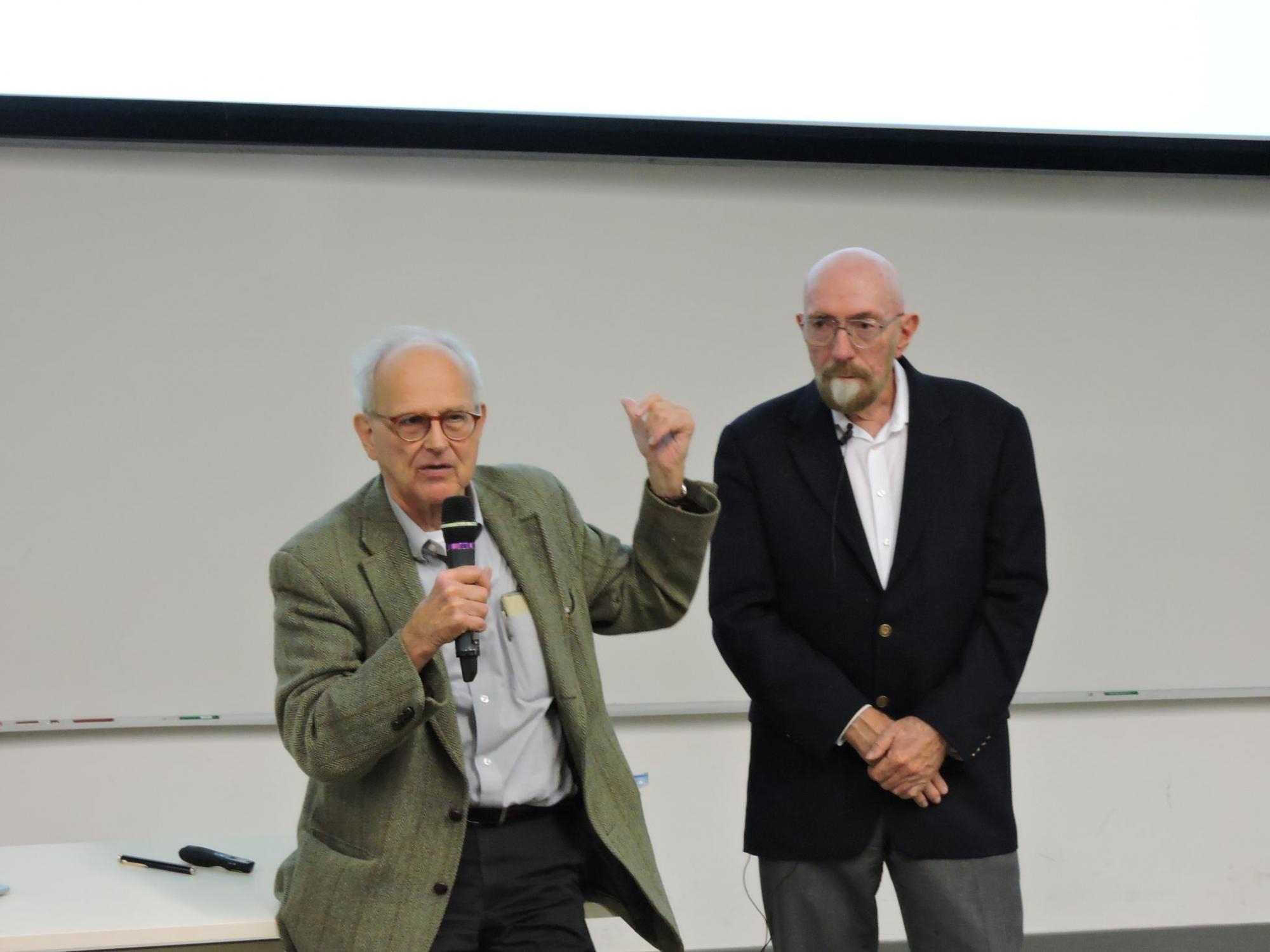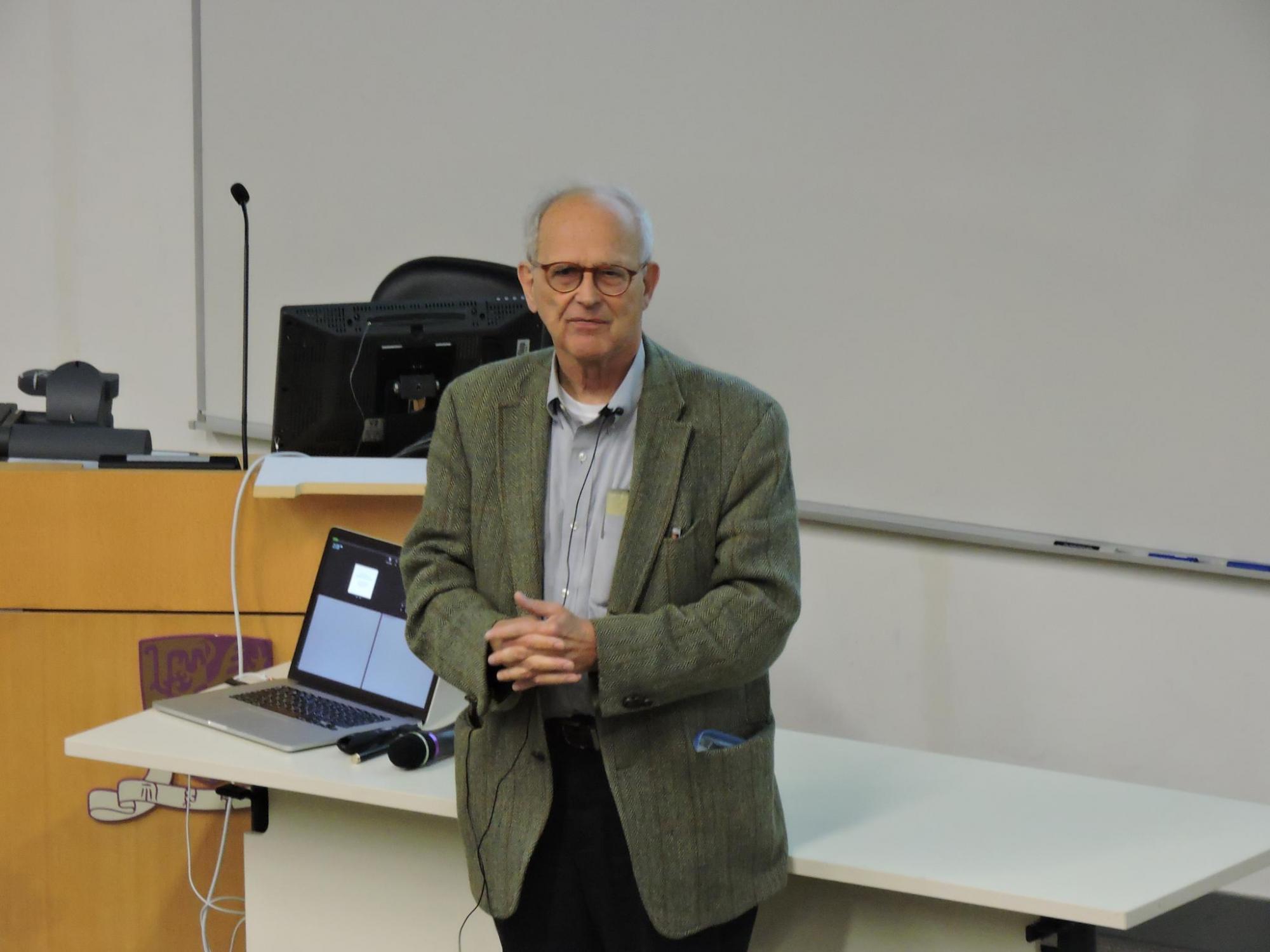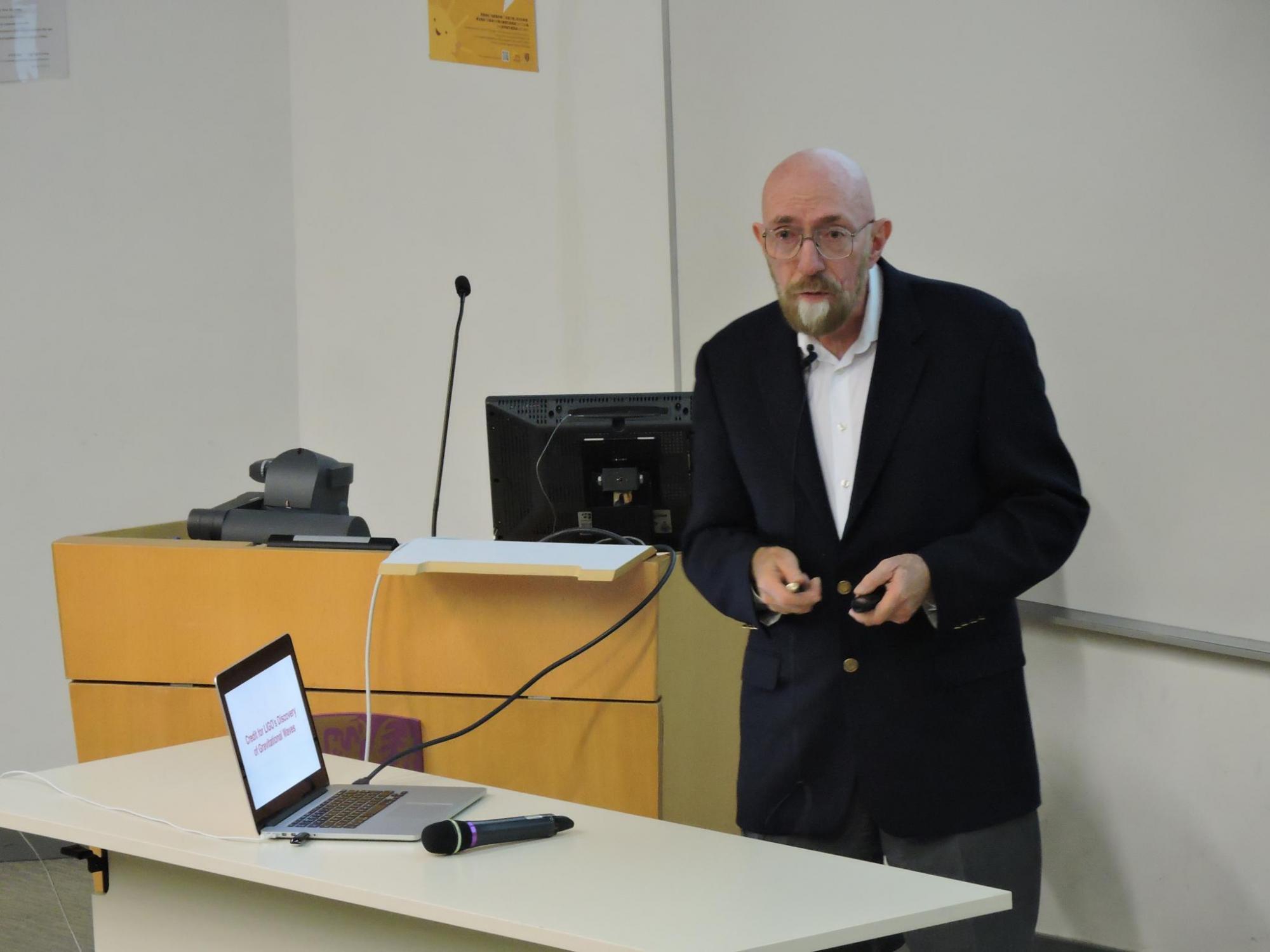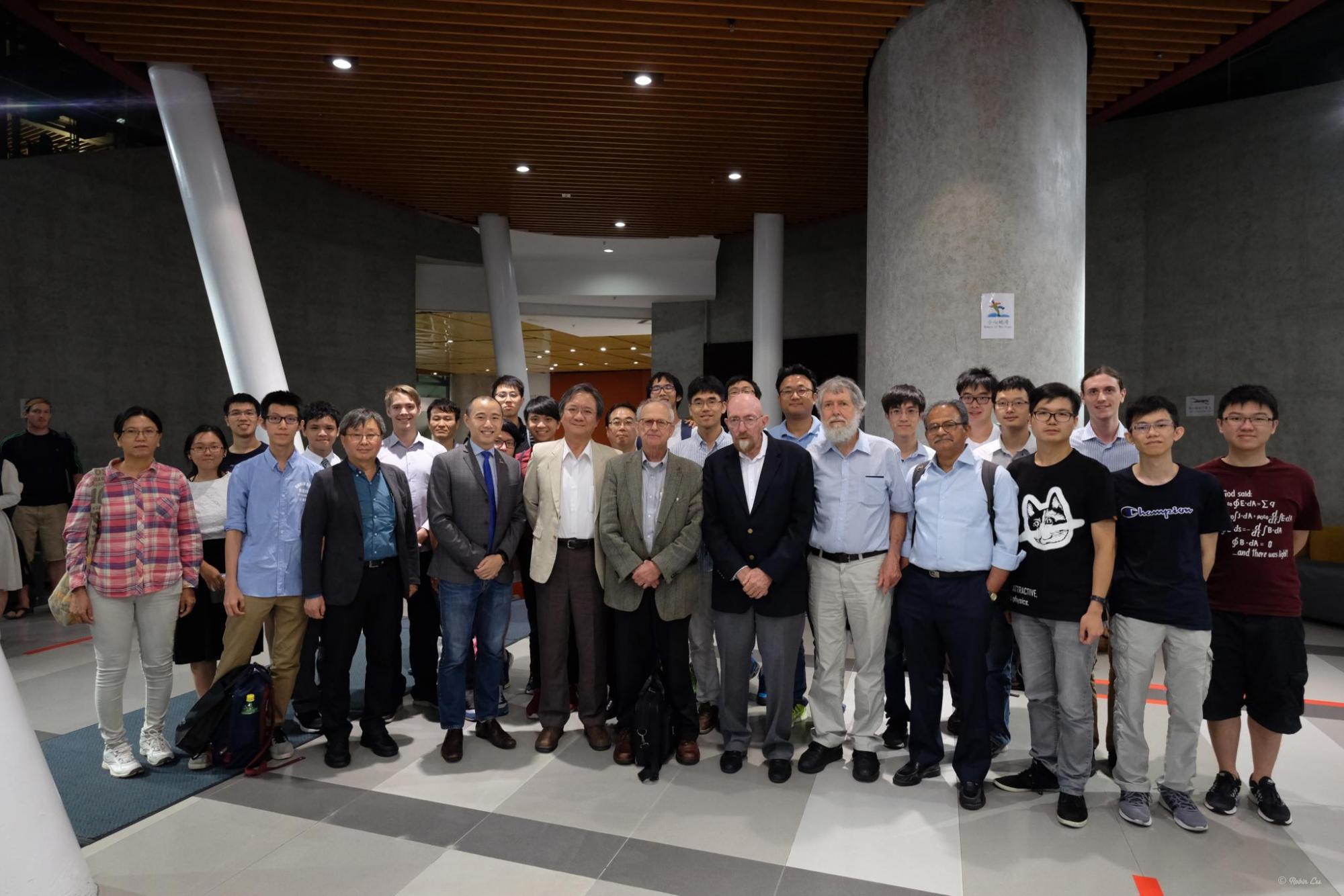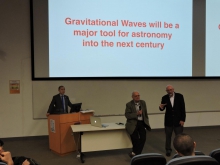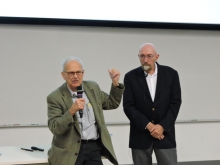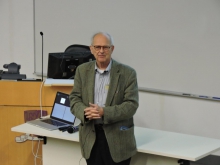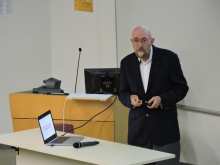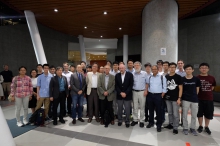CUHK
News Centre
The 2017 Nobel Prize in Physics Awarded for the Discovery of Gravitational WavesProfessor Tjonnie Li from Department of Physics, CUHK Involved in the Winning Project
The Royal Swedish Academy of Sciences announced today (October 3) that the 2017 Nobel Prize in Physics is awarded to Prof. Rainer WEISS, Prof. Barry BARISH and Prof. Kip THORNE for their contributions to the discovery of gravitational waves. Gravitational waves, ripples in spacetime, were first observed in 2015 by the twin Laser Interferometer Gravitational-wave Observatory (LIGO) detectors. Prof. Tjonnie G. F. LI, Assistant Professor, Department of Physics, The Chinese University of Hong Kong (CUHK), is leading the only group in Hong Kong involved with the work of LIGO.
The gravitational waves were initially detected on September 14, 2015 at 17:51 Hong Kong Time by the twin LIGO detectors, located in Livingston, Louisiana, and Hanford, Washington, USA. For the first time, scientists observed ripples in the fabric of spacetime called gravitational waves, arriving at the Earth from colliding black holes in the distant Universe. This discovery definitively confirmed the existence of gravitational waves, a hundred years after its prediction by Albert Einstein’s general theory of relativity. Gravitational waves carry information about their dramatic origins and about the nature of gravity that cannot otherwise be obtained. The detection of gravitational waves has opened a new window to the universe and is revolutionising the way the scientists study the cosmos and its content.
In 1980s, the laureates proposed using laser interferometry to detect gravitational waves. Since then, the LIGO Scientific Collaboration (LSC) has grown into a group of more than 1,000 scientists from over 90 universities/institutes in over 15 countries that develops detector technology and analyses data. The LIGO Observatories are funded by the National Science Foundation (NSF), and were conceived, built, and are operated by California Institute of Technology (Caltech) and Massachusetts Institute of Technology (MIT). Last year, Prof. Kip THORNE and Prof. Rainer WEISS spent a day at CUHK when they visited Hong Kong to receive the 2016 Shaw Prize in Astronomy. During their visit, a forum was held with representatives from the Asian-Pacific countries to discuss the future of gravitational waves in the region.
Prof. LI said, “As a young researcher, my dream is to make contributions to science that will withstand the test of time. With the 2017 Nobel Prize in Physics awarded to the discovery of gravitational waves, this dream has come to reality. I am extremely grateful to the laureates who have conceived the project, to my colleagues who have dedicated decades of their lives, and to my friends who have joined me in this journey. Nevertheless, I believe that we are only at the start of a whole new way to looking at the universe, and that many new discoveries will happen soon. I hope this inspires young students to pursue their own dreams and interests.”
Prof. LI has been involved with LIGO research since 2009 and was a Rubicon Fellow in the LIGO Laboratory at Caltech, one of the two institutes operating LIGO. CUHK formally joined LIGO in 2016 soon after Prof. LI joined the Department of Physics, CUHK. His gravitational-wave research group has been rapidly growing, with Prof. LI taking up leadership positions in the collaboration, with members leading analyses at the core of LIGO science, and graduates joining top programmes overseas. This research is funded by several Hong Kong government grants and is done in collaboration with renowned institutes across the world.
A short video with Prof. LI’s sharing about the LIGO team’s success: https://drive.google.com/file/d/0BxIq17h7bw9feGx0ZWdwSDJ6bUk/view?usp=sharing
Prof. Rainer WEISS (middle) and Prof. Kip THORNE (right) gave a lecture in CUHK hosted by Prof. Tjonnie LI, Assistant Professor, Department of Physics, CUHK (left), sharing the latest research on gravitational waves.
Prof. Rainer WEISS (left) and Prof. Kip THORNE (right) gave a lecture to students in CUHK last year.
The 2017 Nobel Prize in Physics Awarded for the Discovery of Gravitational WavesProfessor Tjonnie Li from Department of Physics, CUHK Involved in the Winning Project
The Royal Swedish Academy of Sciences announced today (October 3) that the 2017 Nobel Prize in Physics is awarded to Prof. Rainer WEISS, Prof. Barry BARISH and Prof. Kip THORNE for their contributions to the discovery of gravitational waves. Gravitational waves, ripples in spacetime, were first observed in 2015 by the twin Laser Interferometer Gravitational-wave Observatory (LIGO) detectors. Prof. Tjonnie G. F. LI, Assistant Professor, Department of Physics, The Chinese University of Hong Kong (CUHK), is leading the only group in Hong Kong involved with the work of LIGO.
The gravitational waves were initially detected on September 14, 2015 at 17:51 Hong Kong Time by the twin LIGO detectors, located in Livingston, Louisiana, and Hanford, Washington, USA. For the first time, scientists observed ripples in the fabric of spacetime called gravitational waves, arriving at the Earth from colliding black holes in the distant Universe. This discovery definitively confirmed the existence of gravitational waves, a hundred years after its prediction by Albert Einstein’s general theory of relativity. Gravitational waves carry information about their dramatic origins and about the nature of gravity that cannot otherwise be obtained. The detection of gravitational waves has opened a new window to the universe and is revolutionising the way the scientists study the cosmos and its content.
In 1980s, the laureates proposed using laser interferometry to detect gravitational waves. Since then, the LIGO Scientific Collaboration (LSC) has grown into a group of more than 1,000 scientists from over 90 universities/institutes in over 15 countries that develops detector technology and analyses data. The LIGO Observatories are funded by the National Science Foundation (NSF), and were conceived, built, and are operated by California Institute of Technology (Caltech) and Massachusetts Institute of Technology (MIT). Last year, Prof. Kip THORNE and Prof. Rainer WEISS spent a day at CUHK when they visited Hong Kong to receive the 2016 Shaw Prize in Astronomy. During their visit, a forum was held with representatives from the Asian-Pacific countries to discuss the future of gravitational waves in the region.
Prof. LI said, “As a young researcher, my dream is to make contributions to science that will withstand the test of time. With the 2017 Nobel Prize in Physics awarded to the discovery of gravitational waves, this dream has come to reality. I am extremely grateful to the laureates who have conceived the project, to my colleagues who have dedicated decades of their lives, and to my friends who have joined me in this journey. Nevertheless, I believe that we are only at the start of a whole new way to looking at the universe, and that many new discoveries will happen soon. I hope this inspires young students to pursue their own dreams and interests.”
Prof. LI has been involved with LIGO research since 2009 and was a Rubicon Fellow in the LIGO Laboratory at Caltech, one of the two institutes operating LIGO. CUHK formally joined LIGO in 2016 soon after Prof. LI joined the Department of Physics, CUHK. His gravitational-wave research group has been rapidly growing, with Prof. LI taking up leadership positions in the collaboration, with members leading analyses at the core of LIGO science, and graduates joining top programmes overseas. This research is funded by several Hong Kong government grants and is done in collaboration with renowned institutes across the world.
A short video with Prof. LI’s sharing about the LIGO team’s success: https://drive.google.com/file/d/0BxIq17h7bw9feGx0ZWdwSDJ6bUk/view?usp=sharing


